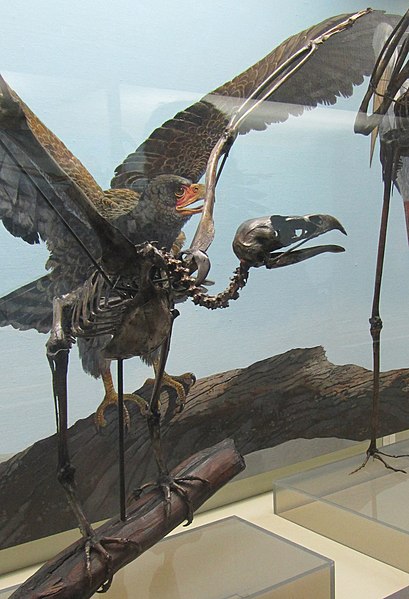The Philippine eagle, also known as the monkey-eating eagle or great Philippine eagle, is a critically endangered species of eagle of the family Accipitridae which is endemic to forests in the Philippines. It has brown and white-colored plumage, a shaggy crest, and generally measures 86 to 102 cm in length and weighs 4.04 to 8.0 kg.
Philippine eagle
Philippine Eagle’s habitat representation in Philippine National Museum.
Illustration of a Philippine eagle kept in captivity in London in 1909–1910
A Philippine eagle nestling
The Accipitridae is one of the three families within the order Accipitriformes, and is a family of small to large birds of prey with strongly hooked bills and variable morphology based on diet. They feed on a range of prey items from insects to medium-sized mammals, with a number feeding on carrion and a few feeding on fruit. The Accipitridae have a cosmopolitan distribution, being found on all the world's continents and a number of oceanic island groups. Some species are migratory. The family contains 255 species which are divided into 70 genera.
Accipitridae
Neophrontops americanus fossil
Neogyps errans fossil
Portrait of a subadult bald eagle, showing its strongly hooked beak and the cere covering the base of the beak.








